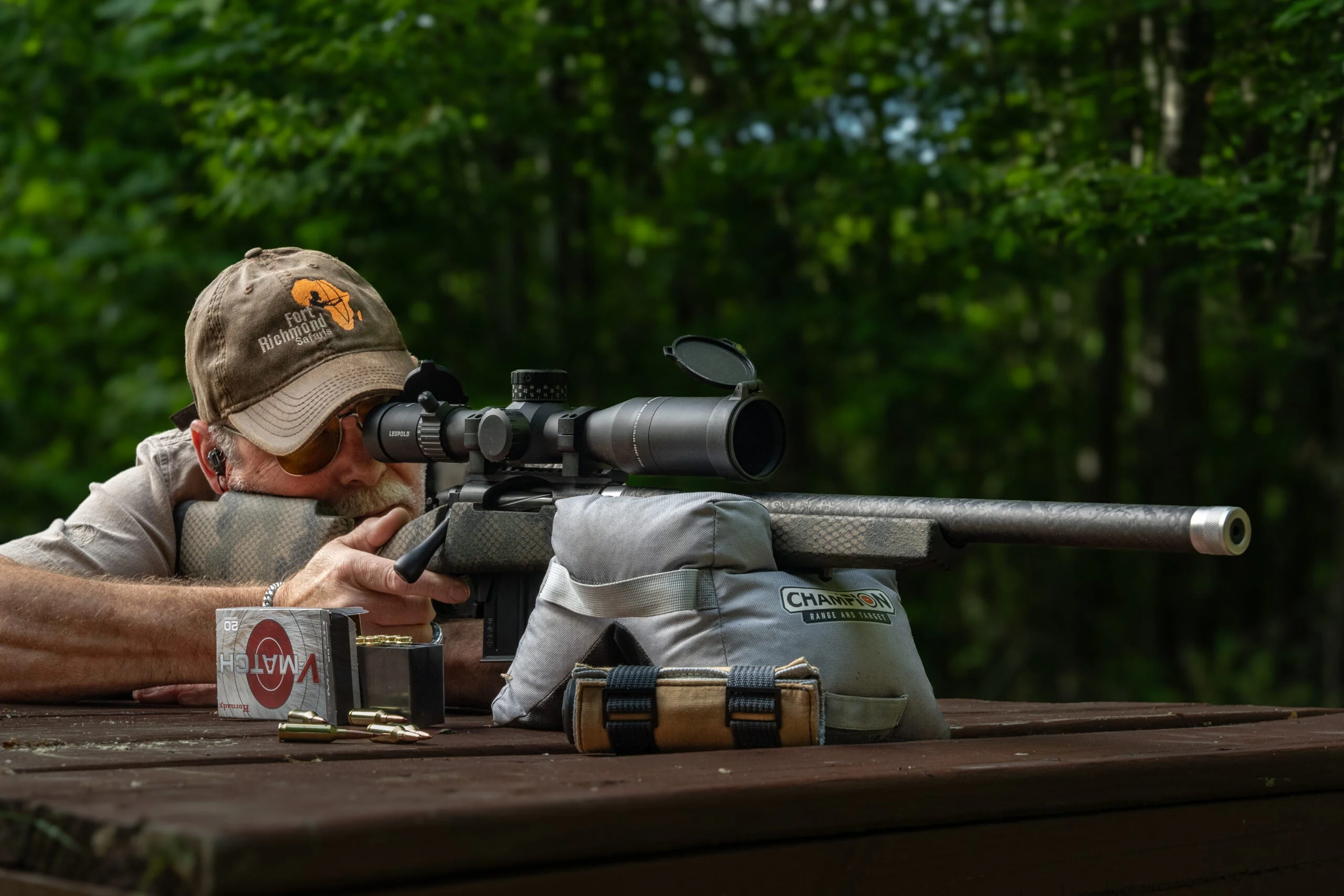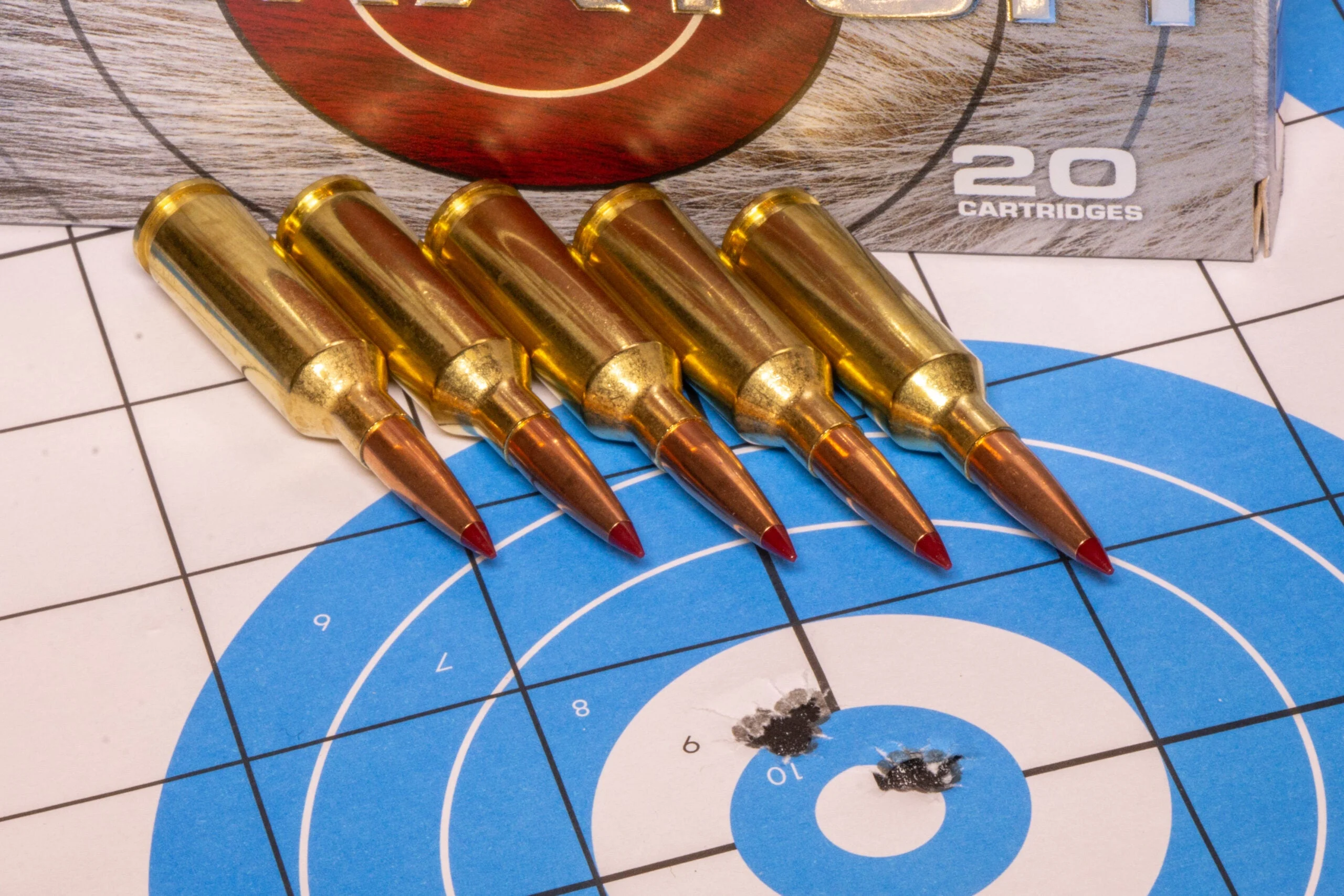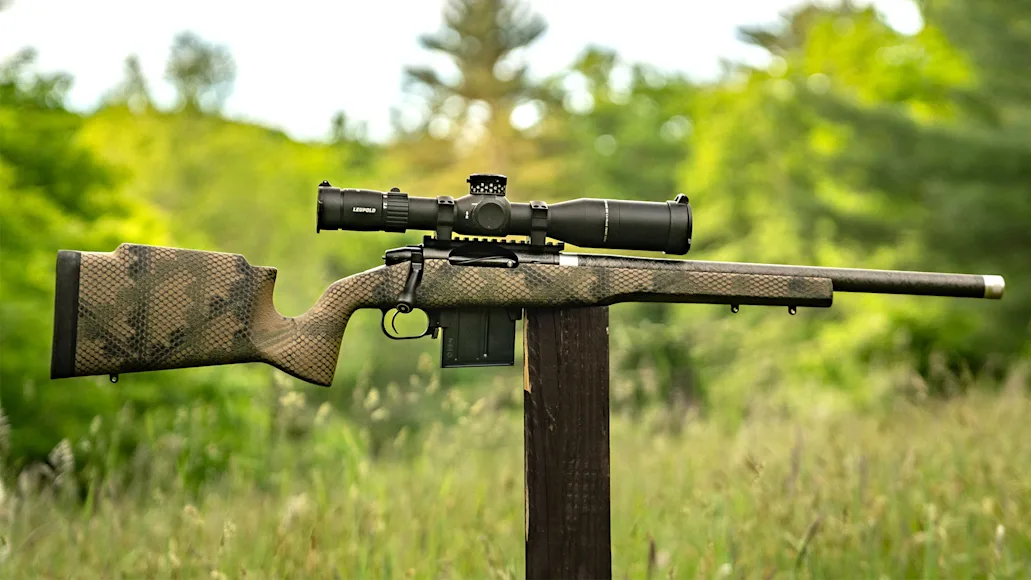_We may earn revenue from the products available on this page and participate in affiliate programs. Learn more ›
_
Proof Research is one the most recognized manufacturers of carbon-fiber-wrapped rifle barrels, but they’re also becoming well known for the rifles they build. The company currently offers 11 different rifle models, including two in the Elevation series. There’s the Elevation MTR (Mountain Tactical Hunter)
and the Elevation Light Weight Hunter
. For 2024, Proof Research is adding the Elevation 2.0, and I recently got to evaluate this new and soon-to-be-released rifle at my home range. The Elevation 2.0 comes with the same sub-MOA precision guarantee as all other Proof Research rifles. As configured, with its relatively light weight and excellent precision, this new bolt-action should appeal to both hunters and recreational and competitive long-range precision shooters
. Here’s my full review.

Learn how to get the all-new Field & Stream journal!
Proof Research Elevation 2.0 Rifle Specs
Length: 39.75 inches
Weight: 7.125 pounds (with magazine)
Barrel: 20-inch carbon-fiber-wrapped, threaded at 5/8 x 24
Action: Zermatt Arms Origin
Trigger: Trigger Tech (2.25-pounds as tested)
Capacity: 10+1
Finish: TFDE or Black Granite Cerakote
Stock: Proof Research carbon-fiber MTR stock
Available Chamberings: 22 ARC (tested), 223 Rem., 6mm ARC, 6.5 Creedmoor, 6.5 PRC, 7mm Rem. Mag., 7mm PRC, 300 Win. Mag., 300 PRC
Price: $3499.00
**Related: Colt CBX TAC Hunter Rifle, Tested and Reviewed
**
Proof Research Elevation 2.0 Rifle Overview

A author shoots groups from a benchrest with the new Elevation 2.0 to test for accuracy and precision. Sabastian “Bat” Mann
The Elevation 2.0 is built around a Zermatt Arms
Origin action. This is the least expensive Zermatt Arms action you can buy, but it still costs $900. It has a swept-back bolt handle, light spiral fluting on the bolt body, and an interchangeable bolt head. This is a twin-lug action configured to be a push/control feed design, with an extractor positioned in the face of one of the lugs at a 90° angle. The bolt does not capture the cartridge during feeding, but the extractor snaps over the rim of the cartridge when the bolt is pushed fully forward. In other words, you do not have to rotate the bolt closed for the extractor to gain control of the cartridge.
Unlike most modern bolt-action rifles, the ejector on the Zermatt Arms Origin action is fixed and engages the cartridge case through a slot in the bolt lug opposing the one that houses the extractor. This means that ejection force is controlled by the effort with which you cycle the bolt. If you want empty cases kicked out to the side, retract the bolt forcefully. If you want them to just drop out of the action so you can easily find them, ease the bolt back.

Closer looks at the Elevation 2.0’s action, bolt face, threaded muzzle, and magazine. Sabastian “Bat” Mann
Chambered for Hornady’s new 22 ARC cartridge
, my test rifle has a 20-inch Sendero-contoured Proof Research carbon-fiber-wrapped, match-grade barrel with a 1 in 7 twist rate. The barrel’s muzzle is threaded at 5/8 x 24 and includes a stainless-steel thread protector. The action has a Remington 700 footprint and comes with a 20 MOA, 14-slot Picatinny rail and is also fitted with a Trigger Tech
trigger. The rifle’s safety is of the common/modern, two-position Remington Model 700-style; it does not lock the bolt handle when in the safe position.
The barreled action is housed in a tastefully camouflaged and textured Proof Research carbon-fiber stock, and the rifle feeds from a detachable 10-round MDT magazine
. But since the action has a Remington 700 footprint, and since the stock has the M5 cutout for bottom metal, it is also compatible with a Hunter detachable box magazine. The barrel is fully free-floated, and the stock is stiff enough to prevent forend-to-barrel contact if you sling up tightly. The stock’s comb is not adjustable but was high enough to work reasonably well with a 44mm objective riflescope in medium rings, and there’s a notch in the nose of the stock’s comb to allow for bolt removal. The recoil lug is bedded and the action rests in the stock on two pillars and slightly raised rails/guides on each side of the forward action screw to sort of provide a V-block nest for the action to nestle in. The rifle comes apart and goes together effortlessly and very precisely. All in all, it is a smartly designed and extremely well-built rifle.
**Related: Aero Precision SOLUS Hunter Rifle, Tested and Reviewed
**
Proof Research Elevation 2.0 Shooting Results

Every five-shot group fired from this new rifle measured under an inch. Sabastian “Bat” Mann
One thing that I’ve come to expect with rifles outfitted with a barrel from Proof Research is that they will shoot very well. When Dove’s Custom Guns built the first rifle for my 2Fity-Hillbilly wildcat cartridge—a 6.5 Creedmoor necked down to 0.257-caliber—I used a Proof barrel, and that rifle is a tack driver. This rifle is too. I only had two factory 22 ARC loads to test, but out of the 10 five-shot groups fired, not a single group measured more than an inch, center to center.
Feeding was very smooth, and ejection was positively flawless. The grip on the stock was a bit straighter than I like for off-hand shooting but was very comfortable from the bench and from the prone position. I also like how the forend tapers just forward of the action. It was thin from top to bottom and comfortable in hand. However, I felt like the rear sling-swivel stud on the forend was placed a bit too far to the rear. The large but tapered and smooth bolt handle was lightning fast to operate, but on a few occasions, after speedily working the bolt and going for the trigger, the knuckle of my trigger finger bumped the bolt handle upwards. It might be a bit too large for some shooters.

All the bench shooting and some of the field shooting with the Elevation 2.0 was conducted with a Silencer Central Banish Backcountry suppressor
. Without the suppressor, the rifle’s balance point was about an inch forward of the front action screw, but oddly the rifle still felt slightly butt heavy. To me, the rifle felt balanced better for off-hand shooting with the 7.5 ounce suppressor installed, even though this moved the balance point another two inches forward.
Final Thoughts on the New Proof Research Elevation 2.0

The author shoots the Elevation 2.0, with suppressor, from offhand to test balance and handling. Sabastian “Bat” Mann
Pros
Great precision
Excellent fit, finish, and workmanship
Cons
Safety does not lock bolt
Expensive
There’s no question the new Elevation 2.0 rifle from Proof Research is expensive and that it will easily meet their sub-MOA guarantee. But price and precision are not the full measure of a rifle. A rifle is the sum of that, plus shooter interface, workmanship, and reliability. Every component of the Elevation 2.0 screams quality, and it is an excellent rifle. But I would not rate it as perfect.
The rifle’s stock was comfortable, and the rough web-like finish provided a good purchase. But the stock lacks adjustability. Also, it seemed odd that—with the advent of rails, M-Lok, and other sling and accessory attachments systems—a rifle at this price point would be fitted with three conventional sling swivel studs. I’d liked to have seen an adjustable comb, quick-detach sling swivel cups on one or both sides of the stock, and a rail or M-Lok accessory mounting system towards the end of the forend. A safety that locks the bolt handle when in the “safe” position would have been a plus too. (Unfortunately, few modern rifle manufactures offer bolt-locking safeties. One manufacturer told me that market research had shown when a potential customer takes a rifle off the rack and the bolt is locked, they tend to put it back and move on.) In the end, while I did feel like the new Elevation 2.0 was slightly underequipped for three-and-a-half grand, it delivered both the precision and quality commensurate with its price.
Finally, while I am looking forward to shooting the Elevation 2.0 chambered for a cartridge with a bit more power to see how comfortable the stock might be under heavier recoil, it was plain enough to see why the 22 ARC is the new cartridge everyone is drooling over. Suppressed, my test rifle in 22 ARC recoiled about like a 7-pound rifle chambered for the 22 Hornet. That should be appealing to a lot of hunters and shooters since the 22 ARC performs more like a 22-250 Remington downrange.
**Read Next: Stag Arms Pursuit Bolt Action Rifle, Tested and Reviewed
**


